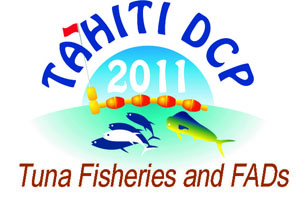FAD Programs in Papua New Guinea and their Commercial Uses
1 : National Fisheries Authority
(NFA)
* : Corresponding author
11th Floor, Deloitte Tower, Port Moresby N.C.D. -
Papouasie-Nouvelle-Guinée
The size of the industrial scale tuna fishery has increased through time and is clearly evident in Papua New Guinea (PNG), which has an extremely productive fishing area. Currently FADs are limited to 1000 in the purse seine fishery, 30 for the pump boat fishery and a handful for the artisanal fishermen in New Ireland and Madang. Design of FADs differs according to the area of use. The industrial purse seine fleet are the predominant users of off-shore FAD and the pump boats and dories for near shore FADs utilising Vertical and Mini horizontal long line, trolling and hand lines. Tuna and tuna like species make up the bulk of the catch along with associated by catch such as rainbow runners, billfish, oceanic trigger fish, sharks and various bait species. FAD deployment and maintenance for the purse seine fishery is done by the companies and deployment is monitored under a Fad management policy. Pump boat and dories utilize FADs deployed by donor funding and are monitored by the provincial fisheries offices. An inshore FAD program is currently underway in PNG. Main socio-economic effects for the inshore FAD program include food security; relieve fishing pressure on reefs, ownership and fishing rights amongst others.

 PDF version
PDF version
